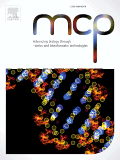
“Cerebral malaria (CM) is a severe and often fatal complication of Plasmodium falciparum infection. It is characterized by parasite sequestration, a breakdown of the blood-brain-barrier and a strong inflammation in the brain.
We investigated the role of the cannabinoid receptor 2 (CB2), an important modulator of neuroinflammatory responses, in experimental cerebral malaria (ECM).
Strikingly, mice with a deletion of the CB2-encoding gene (Cnr2-/-) mice inoculated with Plasmodium berghei ANKA-erythrocytes exhibited enhanced survival and a diminished blood-brain-barrier disruption.
Therapeutic application of a specific CB2 antagonist also conferred increased ECM resistance in wild type mice.
Hematopoietic-derived immune cells were responsible for the enhanced protection in bone-marrow-chimeric (BM)-Cnr2-/- mice. Mixed BM-chimeras further revealed that CB2-expressing cells contributed to ECM development. A heterogeneous CD11b+ cell population, containing macrophages and neutrophils, expanded in the Cnr2-/- spleen after infection and expressed macrophage mannose receptors, arginase-1 activity and IL-10.
Also in the Cnr2-/-brain CD11b+ cells that expressed selected anti-inflammatory markers accumulated and expression of inflammatory mediators IFN-γ and TNF-α was reduced.
Finally, the M2-macrophage chemokine CCL17 was identified as essential factor for enhanced survival in the absence of CB2, since CCL17 x Cnr2 double-deficient mice were fully susceptible to ECM.
Thus, targeting CB2 may be promising for the development of alternative treatment regimes of ECM.”
http://www.ncbi.nlm.nih.gov/pubmed/27474745









